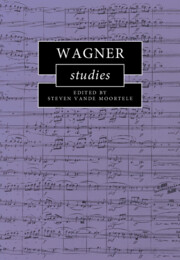Book contents
Introduction: Analysing Wagner
Published online by Cambridge University Press: 17 April 2025
Summary
Wagner’s ‘relationship with music theory’, Alexander Rehding drily notes in his contribution to the present volume, ‘was complicated’ (p. 205). One could say something similar about music theory’s relationship with Wagner. On the one hand Wagner’s music, and especially its harmonic structure, has long served as a touchstone for theoretical models both old and new. At the same time, however, music analysts more often than not have appeared intimidated by the complexity of Wagner’s works, their multi-layeredness and their sheer unwieldiness. Already in 1981, the late Anthony Newcomb noted in the first of a series of remarkably forward-looking articles on Wagner analysis that American music theory was ‘unwilling to touch messy Wagnerian opera with [its] bright Schenkerian tools’.1 To be sure, much has changed since then: not only have Schenkerians (or at least some of them) embraced Wagner, but also the toolbox of both North American and global music theory has expanded considerably over the last three or four decades, not to mention how much broader the perspective of music theory and analysis in general (what they are, what they can do and what they can be about) has become. Still, a survey of general music theory journals or analysis of conference programmes from the past two decades quickly makes clear that Wagner’s music is not exactly one of the discipline’s main preoccupations.
- Type
- Chapter
- Information
- Wagner Studies , pp. 1 - 6Publisher: Cambridge University PressPrint publication year: 2025

